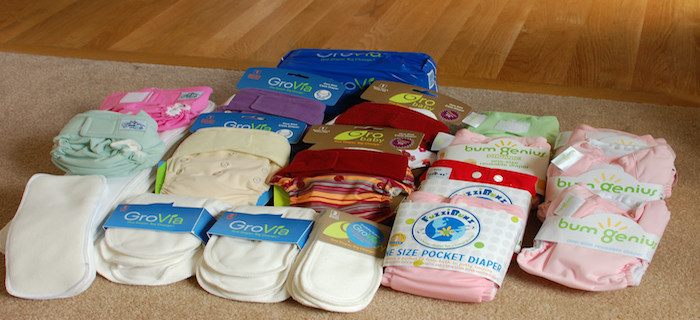Cloth Diapering on a Budget

I cloth diapered my son from infancy through toddlerhood and most of my friends thought I was nuts. They wondered what would possess a modern day mom to diaper the old-fashioned way. The truth is, I'd heard about how much better cloth diapers are for the environment and I'd read reports about how they are also better for babies, but it's the information that I kept hearing about all the money I'd save that finally persuaded me to ditch my disposable diapers for cloth ones.
Theresa Rodriguez Farrisi, award-winning author of Diaper Changes: The Complete Diapering Book and Resource Guide, says that home diapering (using 70 diapers per week, for a 2 1/2 year period) can cost as little as $500, but using disposables for the same period of time and for the same number of changes will cost over $2100.
If you're raising your baby on a budget you should be aware, though, that cloth diapering isn't always cheap! Using cloth can cost well over $1000 during your child's diapering period. And while spending over $1000 cloth diapering still beats spending over $1000 disposable diapering, if your goal is to save money, there are 10 things that you should know to keep you well within your cloth diapering budget:
1. Avoid purchasing fancy diapers. Contoured and fitted diapers, for example, are fancier than standard prefolds and usually cost more.
2. Avoid purchasing a "diaper system" brand of cloth diapers. These high priced diapers can usually only be worn with their high priced counterpart diaper covers.
3. Purchase reusable diaper wipes instead of store bought single use ones.
4. Purchase reusable diaper liners (to help with poopy messes) or rewash all unsoiled flushable liners so you can reuse them. Save even more money by not purchasing diaper liners at all.
5. Purchase inexpensive, quality diaper covers, like the Gerber E-Z cover. This cover is synthetic, costs around $6, and should keep your baby very dry. Pull-on and snap-on covers are also good inexpensive alternatives to higher priced covers.
6. During the rinse cycle, use vinegar or baking soda, instead of more expensive laundry boosters, to neutralize and maintain the pH balance of your baby's diapers.
7. Hang dry your diapers to save energy.
8. If you purchase gently used diapers and covers, make sure they are in good shape or you'll have to replace them.
9. Air dry diaper covers, so they don't wear out too soon.
10. After investing in cloth diapering products, avoid using disposables as much as possible. This will only increase your diapering costs even more.
Remember, your friends may think you're nuts for cloth diapering, but your grandma sure will be proud--and your pocketbook will be a lot more full!
Stacy Jones Tolentino is the Founder and Editor of RealDiapers.com and
manages the Cloth Diaper Cubby at StorkNet.com. She says that cloth diapering is not hard at all and if you diaper her way, she knows you'll save a lot of money.
